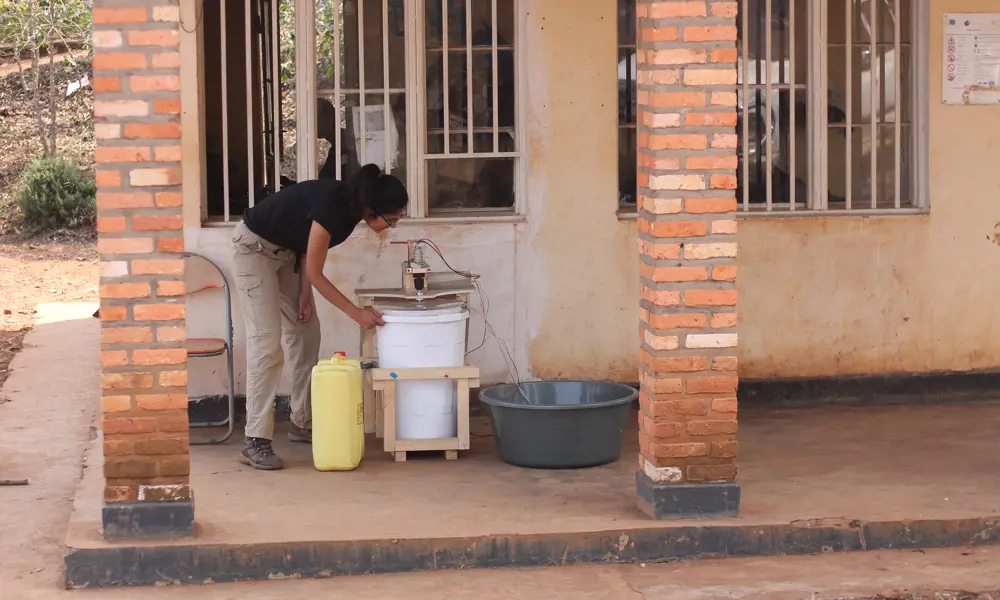
Lessons from the field
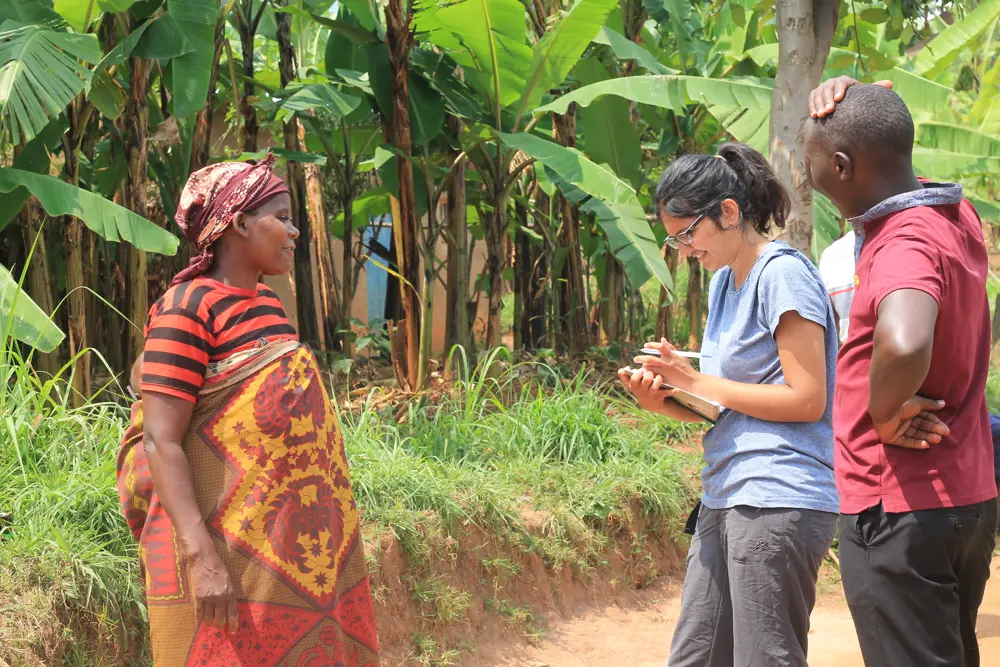
Student engineers collaborate with local people to develop sustainable solutions
Minazi, a remote village in the Gakenke district in the Northern Province of Rwanda, has a water scarcity problem. Being on top of a hill makes it hard for those living there to find water, especially in winter when the small streams that are usually available start to dry up. This means it’s not unusual for people who live in Minazi to walk for between one and two hours every day to collect water.
Access to water is one of the UN’s Sustainable Development Goals (SDGs), which were published in 2015, to be achieved by 2030. This set of 17 targets aims to create a better world by ending poverty, stopping inequality and fighting climate change. Many of these problems can be solved partly, if not fully, by engineering.
This is why water and sanitation, along with another SDG – industry, innovation and infrastructure – is becoming a mainstream focus for engineers everywhere. In the past few years, an increasing number of young engineers have been working in a voluntary capacity in the Global South to help in the worldwide effort to achieve the goals. While voluntary work like this might sound like a selfless thing to do, the engineers are coming home with skills and experiences that stay with them for life and shape their careers.
In 2019, Aakeen Parikh was part of a group of students from Imperial College London who went to Minazi for three weeks. This was her third trip as part of e.quinox, the university’s non-profit organisation that aims to develop sustainable technological solutions in collaboration with rural communities. During this trip, Parikh worked as part of a team trying to improve the water supply to the village. She also helped develop an off-grid rural washing machine, a project that is still in development now.
Water and sanitation
Running and managing projects overseas gives young engineers valuable project management and engineering experience. “On your courses, you’re often taught about the physics and design process, but you have very little opportunity to test your knowledge,” Parikh says. “If you’re in the field, and suddenly need to develop the truss for a water tank you want to install, you are putting a lot of learning into action.”
These challenges might include the procurement of parts and materials, for example, calculating material stresses or working out bending moments to ensure nothing is going to collapse. Another application might be calculating the power it takes to pump water to a certain height. Whatever it is, seeing the theory you have learnt in action is undoubtedly a great way to help understand and remember it.
But the benefits of spending time on projects like this far exceed just practical application of engineering theory. “You learn a lot about the country,” says Parikh, “the rules, regulations and procedures that are in place that you are required to follow for your projects.” The experience also teaches volunteers about the local people and their lifestyles, challenges and daily experiences. “Engineering projects for development are multidisciplinary and the focus should always be on the needs of the community that you are working with, taking a human-centred design approach is key,” she says.
Professor Guy Howard, Global Research Chair in Environmental and Infrastructure Resilience at the University of Bristol, says volunteering was beneficial for his career because it taught him that a lot of engineering is not really about maths. “A lot of engineering is really the art of the doable,” he says. There is a lot of social science involved in engineering that is not necessarily taught in university courses.
There is a lot of social science involved in engineering that is not necessarily taught in university courses.
“Another reason it’s very useful, particularly around water and sanitation, is that it can overcome a little bit of what I would see as a deficit in a lot of engineering teaching at the moment in the UK,” he says. Apart from one or two notable examples, Professor Howard says the UK has moved away from the concept of public health engineering. At the University of Leeds, for example, there is a Public Health Engineering MSc course run by Professor Barbara Evans that has been going for 25 years.
However, many other courses miss out on information about disease dynamics, transmission, basic microbiology and how engineering plays a part in preventing the spread of disease. “I think for many young engineers, going out into the field brings home to them, ‘actually this is what you need to understand’,” Professor Howard adds.
The idea that engineers need to understand much more than the physics and maths involved does not just apply to water and sanitation. It is also what Dr Sakthy Selvakumaran learnt when she visited Peru for three months during her undergraduate degree to do work experience with the Centre for Studies and Prevention of Disasters, PREDES, a local non-governmental organisation (NGO). Following an earthquake that had happened a couple of years previously, in some rural areas three hours south of Lima, people were still living in tarpaulin shelters.
Although it was a programme to rebuild houses, the engineers with the NGO worked closely with local people and local government to understand ambitions and build local capacity, training and resilience. “What I liked about the way PREDES was structured was that they were not just engineers,” she says. “They’re engineers, they’re anthropologists, they’re community workers, they’re architects. They were all of these things. PREDES is a multidisciplinary organisation that understood that it takes more than technical engineers to make a successful piece of work.”
Earthquake resilience
In the UK, construction does not often need to consider seismic activity. “Peru has a long, interesting history, and it includes traditional construction methods designed for seismic resistance” says Dr Selvakumaran. This includes local building techniques to make houses from wooden frames by putting an extra piece of material, such as cane or reed, in between the frame to make it flexible. This is so that when an earthquake hits, the whole structure will bend. Then, local tradespeople semi-render the outside and paint it. In central Lima, there are buildings several storeys high that have been built in this way and withstood hundreds of years of earthquakes.
Without straying from the traditional methods, the engineers at PREDES developed a way of improving upon them. “They made slight modifications with tie wires to make it a little bit more robust,” says Dr Selvakumaran. They also built it in a modular way so that one module would be the start of a home, giving owners the flexibility to add modules to extend their homes over time.
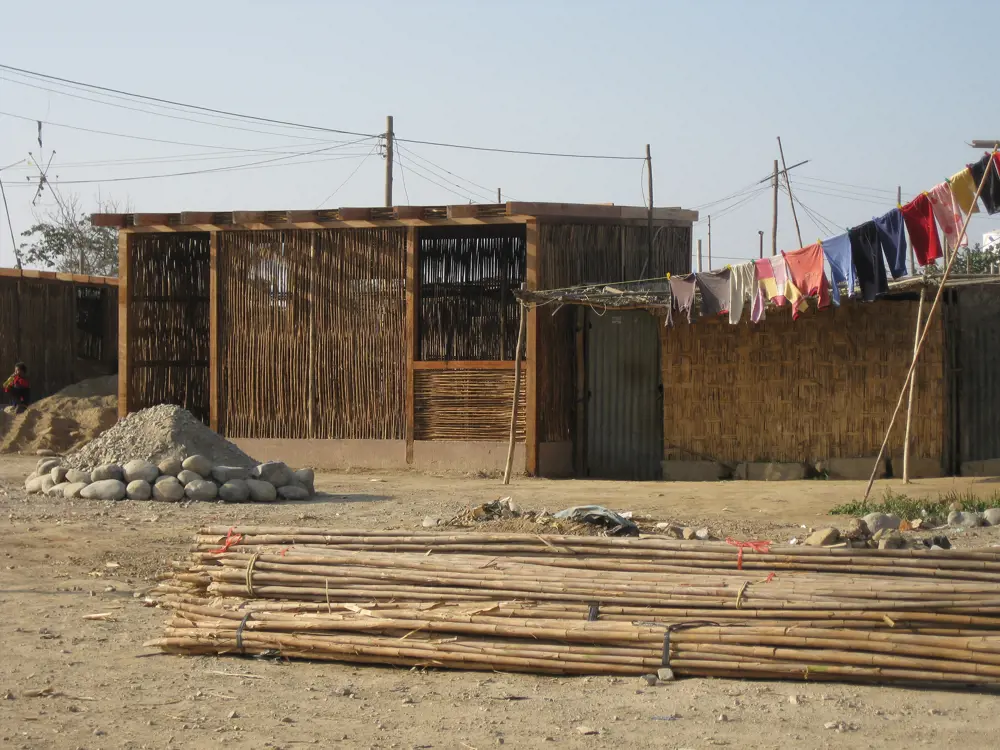
Traditional building methods are used to construct houses in Peru, using flexible material to ensure houses can withstand seismic activity
Dr Selvakumaran’s time in Peru was just before the final year of her undergraduate degree because she wanted to go with enough of a basic understanding to be helpful while she was there, and be able to apply this to understanding the value of the work being carried out. “The hard thing about volunteering, especially when you’re an undergraduate, is to acknowledge you’re going to volunteer but that you may not be that useful, and that the local engineers are making time to teach you.” She says that it’s important to treat it as a learning experience, just like any other work experience.
FemEng
👩🏽🔬 University students empowering women to study science and engineering
Students at the University of Glasgow’s School of Engineering have created a network aiming to empower women studying the discipline. Its work includes school outreach, networking, workshops, and international collaborations. For example, in 2019 the group collaborated with the University of Rwanda on ‘FemEng in Rwanda’. As part of the initiative, female students from both universities worked together to encourage female Rwandan high school students to study science and engineering subjects in further education. After a successful project, the group started planning for a similar initiative in Malawi, which was launched in 2020.
The impact of young volunteers
Dr Selvakumaran says her experience in Peru shaped a lot of her beliefs as an engineer and how she has thought about the world ever since. Now, she is a research fellow at the University of Cambridge, where she specialises in risk and resilience of urban environments. She is the Founder of BKwai, a software platform that provides visualisations and data insights to make construction safer, more productive and more efficient.
Dr Selvakumaran studied engineering because she liked the idea of helping people. Her family left Sri Lanka during the civil war, and she grew up in the UK and Canada. After going back to Sri Lanka, and visiting Peru, she realised the importance of infrastructure to the people living in the wake of a disaster like war or an earthquake. “I became a lot more passionate about engineering education, the idea that everyone should have a right to be educated as an engineer,” she says. “That actually is a great way to drive progress and support communities in a much stronger way than sending people here and there for a few months at a time.”
Dr Selvakumaran also supports the University of Jaffna, Sri Lanka, which opened an engineering school a few years ago. Local engineering academics set up the school from scratch, with a mission of creating competent engineers with social, economic and ethical values, who contribute to sustainable development.
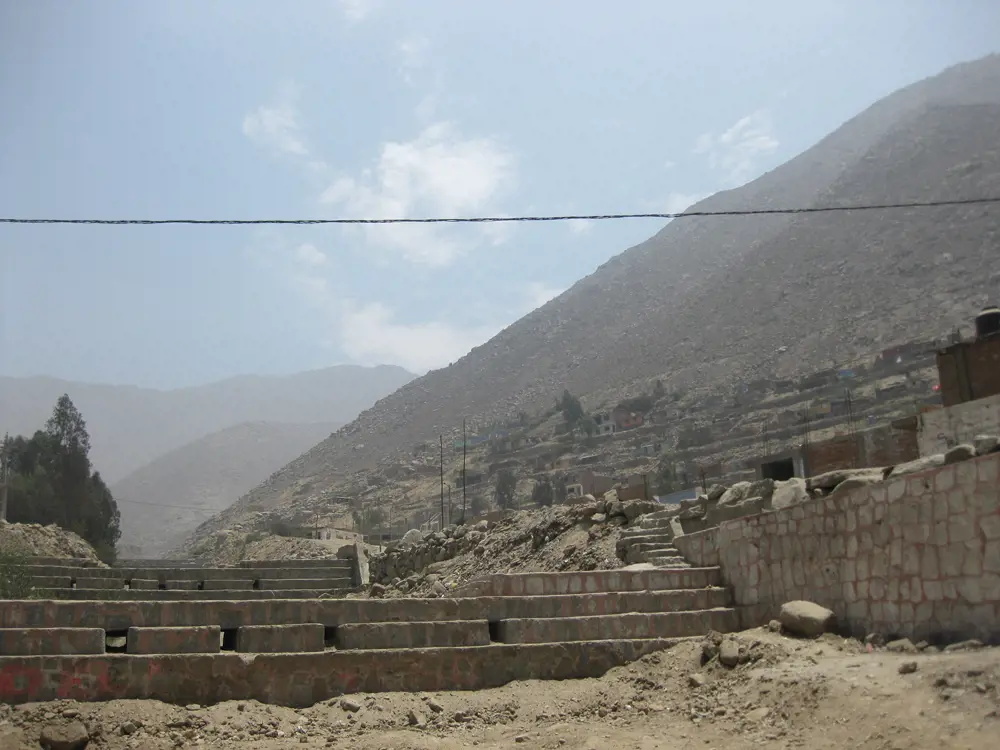
Volunteers in Peru also worked on landslide defences in the lower Rimac valley, south of Lima
The value of young volunteer engineers in host countries has changed in the past few years, compared to what it was decades ago. “Back at the beginning of my career, in the 1980s and 1990s, it probably was still the case that there were fewer than needed engineering experts in low- and middle-income countries,” says Professor Howard. “So, having young UK engineers going out and working on things actually did make up for a genuine deficit.” Dr Selvakumaran emphasises the need for engineers to be considerate and careful when working abroad: “engineers need to remember that have just as much ability to accidentally cause harm as they do good.”
For Parikh, her experiences working abroad have helped shape her career choices. “I always knew that I wanted to work in international development as an engineer,” says Parikh. Having grown up in Mumbai, where economic disparity is as clear as day, Parikh realised that STEM students have the skills to address the biggest challenges the world is currently facing.
SAFAD
🌱 Student volunteers for the SAFAD charity
For over 50 years, students from Cranfield University have volunteered in the global south around the world, as part of the charity Silsoe Aid for Appropriate Development (SAFAD). More than 340 graduate and postgraduate volunteers have travelled to almost 40 different countries, working with local organisations. The group specialises in six fields: water and sanitation; agroforestry; agriculture and soil conservation; education; small businesses; and intermediate technologies. Because of this, students from a variety of disciplines, from environmental sciences to engineering, have participated in the charity’s work.
“Participating in these student volunteering projects through e.quinox provided me with the opportunity to actually make an impact with my degree,” she says. “And it reinforced my feelings towards my goal because the experiences and perspective that you gain is invaluable, reminding you that some people still do not have basic human rights, and access to clean water and education is a basic human right that everyone should have.” Now, she is working on a PhD, but she knows she wants to continue working towards international development, particularly in sustainable humanitarian action for rural communities under the poverty line.
Now, it seems there is great value in these experiences for young engineers. But it also inspires within them a direction and skills and perspectives that they couldn’t gain in the UK, which means they will continue to have a lasting impact for their whole careers.
***
This article has been adapted from "Lessons from the field", which originally appeared in the print edition of Ingenia 86 (March 2021).
Contributors
Professor Guy Howard is a water scientist and engineer with a background in policy and research in low and middle income countries. He is the Global Research Chair in Infrastructure and Environmental Resilience and Associate Director (International) of the Cabot Institute of the Environment at the University of Bristol.
Aakeen Parikh is a PhD researcher at Imperial College London. She was an advisory board member for e.quinox and part-time humanitarian design and engineering consultant. She is now the Director and Lead Design Consultant for Minazi Consulting.
Dr Sakthy Selvakumaran is currently the Isaac Newton Trust / Newnham College Fellow in Engineering and Director of Studies in Engineering at the University of Cambridge. She is also the founder of the tech start-up BKwai.
Keep up-to-date with Ingenia for free
SubscribeRelated content
Environment & sustainability
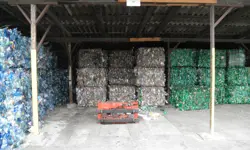
Recycling household waste
The percentage of waste recycled in the UK has risen rapidly over the past 20 years, thanks to breakthroughs in the way waste is processed. Find out about what happens to household waste and recent technological developments in the UK.
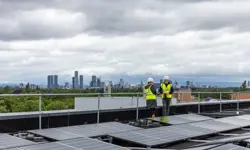
Upgrade existing buildings to reduce emissions
Much of the UK’s existing buildings predate modern energy standards. Patrick Bellew of Atelier Ten, a company that pioneered environmental innovations, suggests that a National Infrastructure Project is needed to tackle waste and inefficiency.
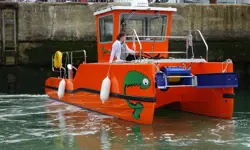
An appetite for oil
The Gobbler boat’s compact and lightweight dimensions coupled with complex oil-skimming technology provide a safer and more effective way of containing and cleaning up oil spills, both in harbour and at sea.
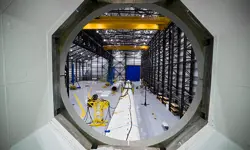
Future-proofing the next generation of wind turbine blades
Before deploying new equipment in an offshore environment, testing is vital and can reduce the time and cost of manufacturing longer blades. Replicating the harsh conditions within the confines of a test hall requires access to specialist, purpose-built facilities.
Other content from Ingenia
Quick read

- Environment & sustainability
- Opinion
A young engineer’s perspective on the good, the bad and the ugly of COP27

- Environment & sustainability
- Issue 95
How do we pay for net zero technologies?
Quick read

- Transport
- Mechanical
- How I got here
Electrifying trains and STEMAZING outreach

- Civil & structural
- Environment & sustainability
- Issue 95